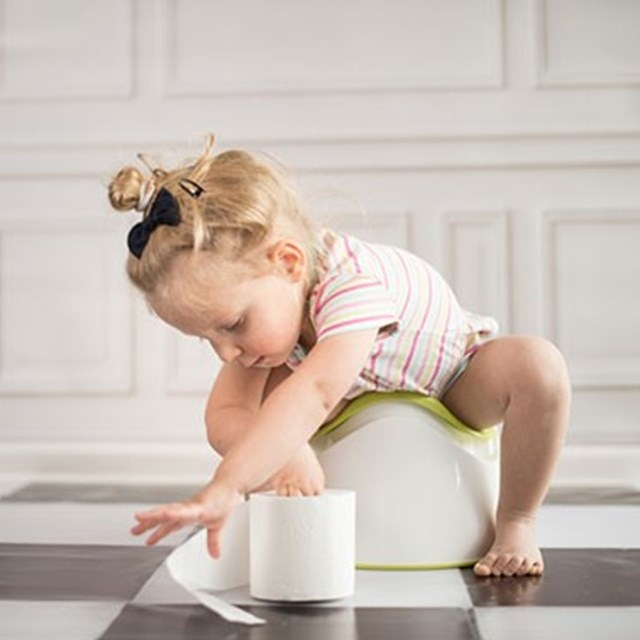
As far as important childhood milestones go, families all over the world can probably agree on the importance of potty training. When a child becomes potty trained it’s not only a sign of growth and independence, but it’s also a way for a child to understand their body’s signals.
But how do you know when a child is ready to start potty training? And how do you successfully help a child make the transition from diapers to the toilet?
Many children show signs they are ready for potty training between the ages of 18 and 24 months. However, some children take as long as 3 years before they are ready. The important thing to remember is that families should not be in a rush because if a child starts too early, he or she may take longer to train.
No matter the age, there are certain signs that indicate a child is ready to begin potty training including:
- Pulling at a wet or dirty diaper.
- Expressing an interest in others’ use of the potty or even copying bathroom behavior.
- Having a diaper remain dry longer than the usual time (2 hours or more)
- Waking up dry from a nap.
- Expressing to a parent or guardian that they are about “to go.”
- Can pull down his/her own diapers or disposable training pants.
- Wants to use the potty or wear underwear rather than diapers.
How long does it take to potty train?
Teaching your toddler to potty train will not be a quick process; however, with patience it can be simple. The average potty-training process takes between 3-6 months, but as previously stated, your child may need more or less time.
Preparation is key to successful toilet training. Your child will have the best chance for success if she or he is equipped with the necessary vocabulary and motor skills to make it to a restroom when he or she realizes the urge to go. If your child is in in a child care program or is younger than six, communicate with your child’s teacher about the program’s potty policy. Bring your child’s teacher on board with the toilet training process – most teachers have gone through toilet training before and may have helpful tips for you to use at home. Your child will appreciate having continuity of training between his home and his child care program.
Families should also familiarize their child with a potty seat by putting it in the bathroom — even making the potty a fun place where a child wants to sit — with or without a diaper. By decorating the practice potty or using it for a sitting place where a child can look at a book or play with a toy it becomes a non-threating and routine part of their day.
Once the process has begun, families should be aware of what times of the day a child has the urge to go. Then a child can begin to establish a routine by sitting on the potty during those times — especially after a meal or drinking lots of fluids. Also, be sure to praise a child for their efforts. Positive feedback will keep a child interested in mastering potty time.
Tips for potty training:
- Use and teach your child to use words to explain the act of using the restroom (pee, poop, potty or toilet).
- Ask your child “Are you going to poop? Do you need to pee?”
- Ask your child to notify you when his diaper is wet or soiled.
- Make time for the potty-training process.
- Model for your child how to sit on the toilet. Let them know what you’re doing so your child will be clear on what is taking place.
- Create a routine, such as taking them to the restroom when they first wake and 40 minutes after drinking.
- When you remove the bowel movement from your child’s diaper, take it to the toilet and let your child know that poop goes in the toilet.
- Make sure that all your child’s caregivers follow the same routine and use the same terms for body parts and restroom usage as you.
Accidents Will Happen:
Remember that accidents will happen during the potty-training process — even after it seems a child has figured it all out. If an accident does occur, be sure and to keep cool, and don’t punish or shame a child for making a mistake. It will only set the training process back a few steps.
If your child is over the age of four and is potty trained during the day but having accidents during the night (3-5 accidents a week), you may want to talk to your child’s pediatrician. Nocturnal enuresis, also known as “bedwetting,” is a common problem that your pediatrician most likely will be able to help with.
The thing to remember is to remain patient and persistent when toilet training your toddler. Using positive reinforcement methods and clear communication will help ensure your toddler’s potty-training success.
For more tips on effective potty training, visit https://www.parents.com/toddlers-preschoolers/potty-training/tips/potty-training-tips/ or to learn potty training tips used by child care providers, visit https://www.todaysparent.com/toddler/potty-training/how-daycares-make-diapers-disappear/.

